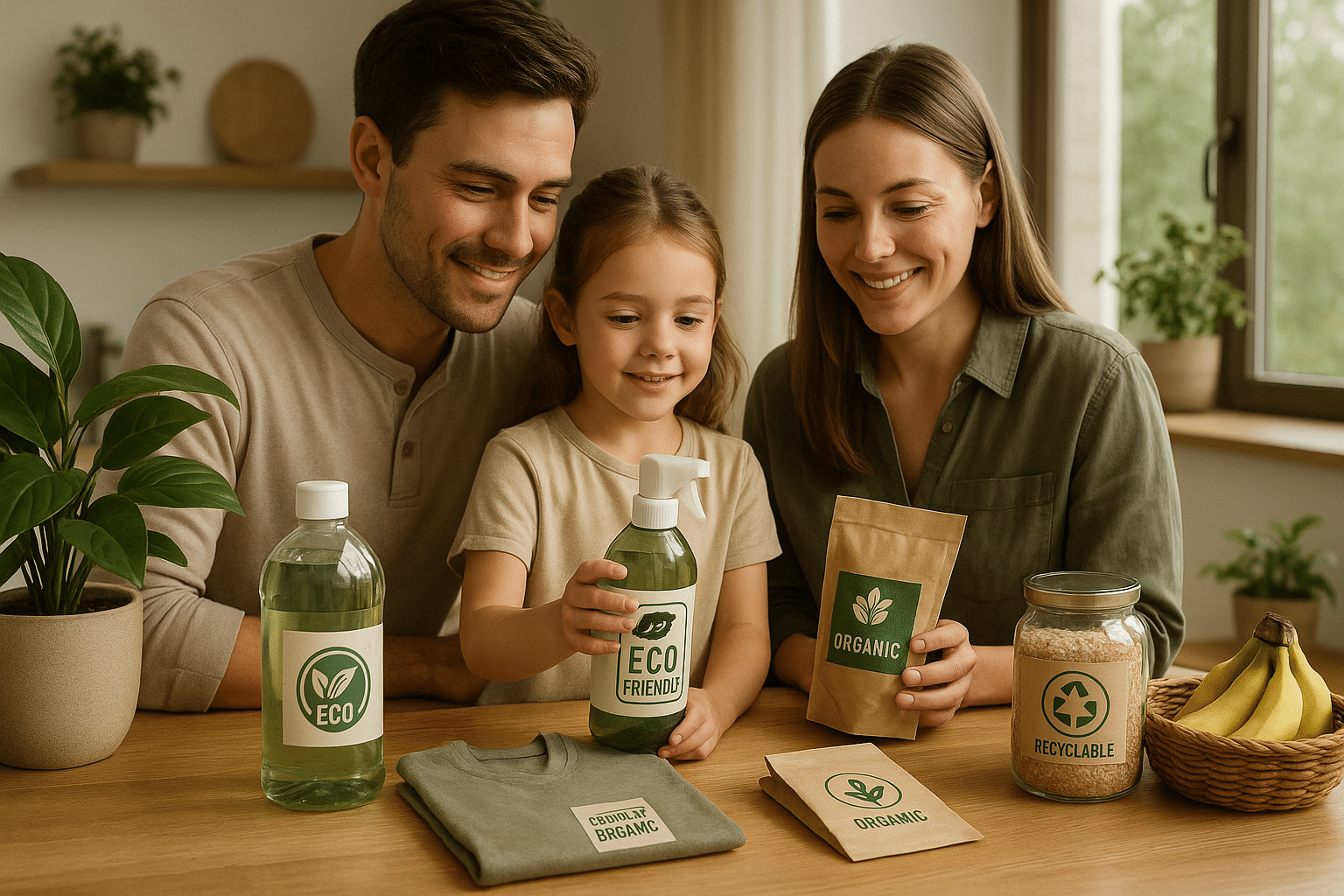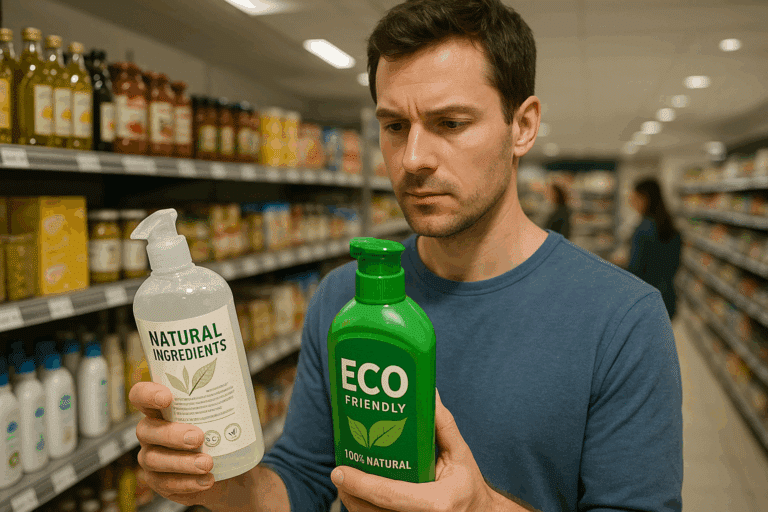The concept of ‘going green’ represents our collective efforts towards adopting more sustainable and environmentally friendly practices. One notable approach to this green lifestyle is the use of products with green certifications.
Deciphering these green certifications, however, can sometimes feel like learning a new language. The market is inundated with a myriad of eco-labels, making it challenging to understand their true significance and how they contribute to a sustainable lifestyle. Nevertheless, understanding these certifications is essential in making informed purchasing decisions that align with your green lifestyle ambitions.
In this detailed guide, we intend to shed light on the realm of green product certifications. By the end of this read, you should have a comprehensive understanding of various green certifications, what they mean, and how they can impact your journey towards a sustainable lifestyle. Ready to delve into the world of green product certifications? Let’s go green with confidence! 🌍
Table of Contents
In our journey to demystify green product certifications, we will touch on several key areas:
- What are Green Product Certifications?
- The Importance of Green Product Certifications
- Understanding Various Green Product Certifications
- How to Identify and Trust Green Product Certifications
- The Role of Green Product Certifications in a Sustainable Lifestyle
Each section is designed to provide you with an in-depth understanding, packed with actionable insights that you can incorporate into your lifestyle.
First, we will delve into what green product certifications really are, and their place in our quest for sustainability. This will set the stage for us to explore why these certifications are essential in the current environmental landscape.
Following that, we’ll take a deep dive into various green product certifications. We will explore some of the most common and globally recognized certifications, helping you to understand what each represents and how they differ. This should equip you with the knowledge needed to decipher those tiny labels on product packaging, and understand what they truly mean.
In our fourth section, we’ll help you become a discerning consumer. We will discuss how to identify and trust these certifications, differentiating between genuine green products and those that merely ‘greenwash’.
Finally, we will wrap up by discussing the role of green product certifications in promoting a sustainable lifestyle. We will explore how your understanding and application of this knowledge can directly contribute to your green lifestyle.
Our goal is to make you well-versed in the language of green product certifications. This will empower you to make informed decisions, reducing your environmental footprint while contributing to a healthier planet. So, buckle up and join us on this enlightening journey into the world of green product certifications!
Introduction: A Journey to Sustainable Living
More than ever before, we are collectively aware of the importance of sustainable living. As consumers, we are confronted with a vast array of products claiming to be ‘green’, ‘eco-friendly’, and ‘sustainable’. However, how can we discern which products truly align with these principles and which are merely leveraging these terms for marketing? Understanding green product certifications is key to making informed choices. In this comprehensive guide, we will delve into the world of green product certifications to help you live a sustainable lifestyle with confidence.
Before diving deeper, it is recommended to watch the informative YouTube video titled “What are green product certifications?” by GreenBuildingAdvisor to understand the basics (due to privacy settings, a direct link cannot be provided).
Ready to embark on this green journey? Let’s get started.
Unraveling the Mystery of Green Product Certifications
Green product certifications are awarded to products that meet specific environmental, social, and economic sustainability standards. These certifications are a means to communicate to consumers that a product is genuinely eco-friendly and socially responsible. But with dozens of certifications available, understanding what each one signifies can be overwhelming.
Fortunately, we have broken down some of the most common green product certifications to make your journey to a sustainable lifestyle simpler. The following comparative table provides a quick reference to help you understand what each certification covers and its relevance to your eco-friendly journey.
| Certification | Scope | Relevance |
|---|---|---|
| Energy Star | Energy efficiency | Products with this label consume less energy, helping to reduce your carbon footprint. |
| USDA Organic | Agricultural practices | Products with this label are grown or produced without the use of synthetic pesticides, genetically modified organisms, sewage sludge, or irradiation. |
| Fair Trade Certified | Social and economic | Products with this label promote sustainable livelihoods for farmers and workers, protect the environment, and build strong, transparent supply chains. |
For a more in-depth understanding of these certifications, consider watching the YouTube video titled “Sustainable Certifications Explained” by Green Shortz. This video provides a thorough breakdown of various certifications and their impacts on the environment and society.
Going Green: How Certifications Influence Sustainable Lifestyle Choices
Understanding green product certifications not only allows you to make informed choices but also promotes a sustainable lifestyle. Each time you choose a product with a legitimate green certification, you contribute to the preservation of our environment and the promotion of ethical, sustainable practices.
It’s important to realize that these certifications aren’t just labels. They represent years of effort by organizations and companies to minimize their impact on the environment and provide consumers with genuinely sustainable options. They are a testament to the industry’s commitment to transparency and the consumer’s right to make informed choices.
From choosing energy-efficient appliances to buying organic produce, each green choice you make is a step towards a more sustainable future. So next time you shop, look out for these certifications and go green with confidence.
Demystifying Common Myths About Green Certifications
While green certifications have come a long way in promoting sustainable consumerism, some misconceptions still persist. Let’s debunk a few common myths to clear the air:
- Myth 1: All ‘green’ products are genuinely eco-friendly. Not all products labeled ‘green’ or ‘eco-friendly’ are actually sustainable. Some may use these terms for marketing, without meeting any formal certification standards.
- Myth 2: Green products are always more expensive. While some eco-friendly products may come with a higher price tag, many are competitively priced. Plus, the long-term environmental and health benefits often outweigh the initial cost.
- Myth 3: All certifications are equal. Different certifications have different criteria and cover different aspects of sustainability. Some are more stringent than others. It’s crucial to understand what each certification means before making a purchasing decision.
Want to learn more about common misconceptions related to green products? The YouTube video titled “5 Green Myths Debunked” by Practically Green is an excellent resource to further explore this topic.
Embracing Green Certifications: Your Role as a Conscious Consumer
As consumers, we play a critical role in supporting and promoting sustainable practices. By choosing products with legitimate green certifications, we can not only reduce our carbon footprint but also encourage companies to adopt sustainable practices.
Remember, going green is not just about making one-off choices. It’s about adopting a lifestyle that prioritizes sustainability and social responsibility. By understanding green product certifications, you empower yourself to make informed decisions that align with these values.
As we conclude this guide, we hope you feel more confident in navigating the world of green product certifications. Remember, every green choice counts. Let’s make those choices count for a sustainable future!

Conclusion
In the realm of rapidly advancing technology and growing digitalization, understanding the core concepts and intricacies of Information Technology (IT) and Software Engineering has become an indispensable part of modern life. Throughout this article, we delved into the intricacies of these fields, shedding light on the complex concepts in a comprehensible manner.
Let’s quickly summarize the key points we discussed. Initially, we looked into the fundamental principles of IT and Software Engineering, touching on their definitions, their role in today’s world, and the difference between the two. We then explored the critical topics within these fields, such as data structures, algorithms, database systems, and software development lifecycles.
In the heart of the matter, we discussed how software is designed and developed, the processes involved, and the importance of software quality assurance. We also touched upon the different types of software and their applications in various sectors. Furthermore, we looked into emerging trends in these areas, like AI, machine learning, big data, and cloud computing, and the ways these innovations are shaping our future.
This article’s purpose was not only to inform but also to inspire. As the world continues to evolve and technology becomes more intertwined with our lives, the importance of IT and Software Engineering cannot be overstated. Whether you’re a student considering a career in these fields, an industry professional looking to brush up on your knowledge, or someone with a passion for understanding how technology works, we hope this article has served as a valuable resource.
As we continue to delve deeper into the digital age, let’s keep learning and growing together. Remember, the world of IT and Software Engineering is vast and ever-evolving, so stay curious, keep questioning, and never stop exploring.
We encourage you to share your thoughts in the comments section below and share this article with others who may find it useful. Every new insight, every shared piece of knowledge, brings us a step closer to understanding our digital world.
For those who wish to delve deeper into the subject matter, feel free to check out these active links: [HTML TAG] Insert active research link here [/HTML TAG], [HTML TAG] Insert active research link here [/HTML TAG]. Remember, knowledge is power, and in this digital age, it is also a necessity.
In conclusion, we hope this article has given you a better understanding of the complex yet fascinating world of IT and Software Engineering. Remember, “The only limit to our realization of tomorrow will be our doubts of today.” – Franklin D. Roosevelt. 🌐💻🚀
To borrow the words of Steve Jobs, “Stay hungry, stay foolish.” Keep learning, keep innovating, and keep pushing the boundaries of what’s possible in this digital age. Together, we can shape a better, more technologically advanced future.
[HTML TAG] #IT [/HTML TAG] [HTML TAG] #SoftwareEngineering [/HTML TAG] [HTML TAG] #Technology [/HTML TAG] [HTML TAG] #DigitalFuture [/HTML TAG]



